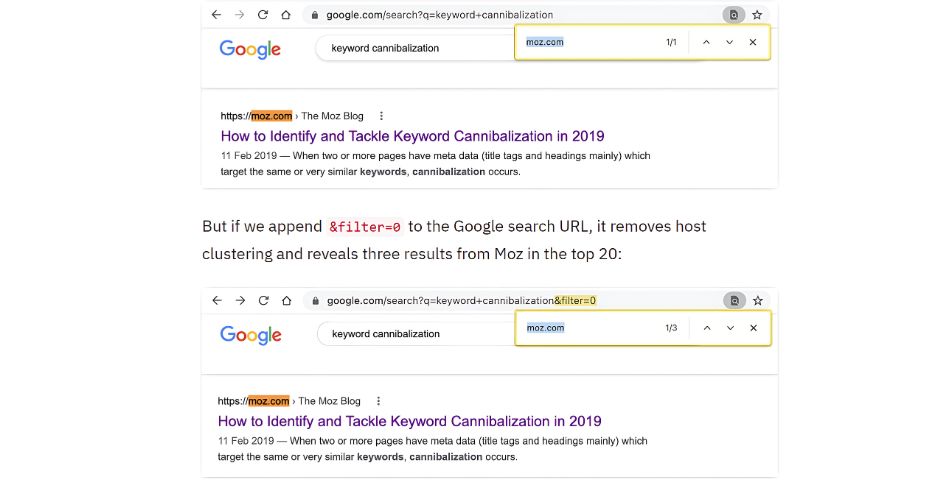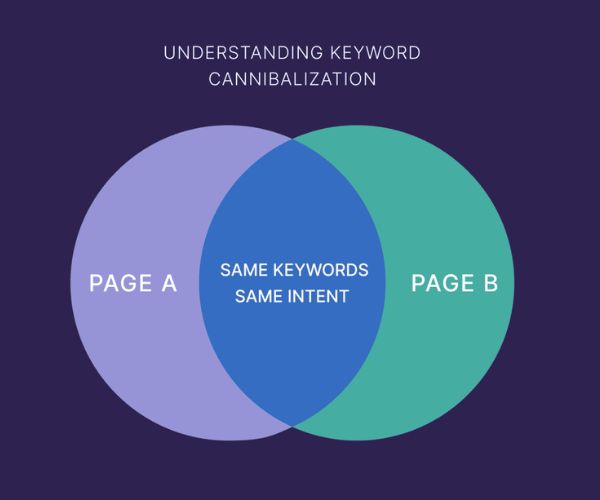Imagine your website has multiple blog posts or pages trying to rank for the exact same keyword-but instead of helping your SEO, it’s actually hurting it. That’s keyword cannibalization.
In simple terms:
Keyword cannibalization happens when multiple pages on your site compete for the same keyword, confusing Google and weakening your ranking power.

How Does Keyword Cannibalization Impact Your CTR?
CTR (Click-Through Rate) measures how many people click your site link when they see it in search results.
When keyword cannibalization occurs, CTR often drops because:
1. Lower Rankings Overall
If two or more of your pages target the same keyword, Google splits their ranking potential. Instead of one strong page in the top 3, you may have two weaker pages at #7 and #10.
Example:
A digital marketing agency had two blog posts:
- “Best SEO Strategies for 2024”
- “Top SEO Tips for Business Growth”
Both aimed to rank for “SEO strategies”.
Result?
Neither post ranked in the top 5. Both hovered on page 2.
After combining the content into one powerhouse post, it hit position #3 and CTR increased by 67%.
2. Confusing User Intent
If multiple pages appear for the same keyword but offer slightly different takes, users may skip both-confused by which to choose.
Example:
Let’s say someone searches for “Beginner Yoga Guide” and sees:
- Page A: “Yoga for Beginners: Daily Routine”
- Page B: “Yoga for Beginners: Common Mistakes”
Both are helpful but neither fully matches the searcher’s intent for a comprehensive guide. CTR suffers as they click on a competitor’s all-in-one guide instead.
3. Diluted SERP Presence
Instead of one strong, high-ranking result with a high CTR, your site ends up with multiple low-engagement links, often further down the page.
Google might even show the wrong page if it’s unsure which one is the most relevant.
Also check Importance of E-E-A-T in SEO Content
How to Fix Keyword Cannibalization & Boost CTR
Step 1: Audit Competing Pages
Use tools like:
- Google Search Console (look for pages ranking for the same query)
- Ahrefs → Site Explorer → “Organic keywords” report
- Screaming Frog SEO Spider
Step 2: Decide What to Do With Each Page
Merge, redirect, or differentiate content.
- Merge similar posts into a single, authoritative one.
- Use 301 redirects to guide link equity to the new version.
- Differentiate intent: Make one page target “What is SEO?” and the other “How to Do SEO”.
Step 3: Improve Internal Linking
Guide search engines to your primary page by linking to it from related articles using consistent anchor text.
Step 4: Update Titles and Meta Descriptions
Ensure each page has a unique, clear purpose.
Differentiate title tags and metas to reduce confusion for both Google and users.
Explore here Google’s March 2025 Core Update : What You Need to Know
Real-Life Case Study: Online Pet Store
An online pet shop had:
- “How to Bathe Your Dog at Home”
- “DIY Dog Bathing Tips”
- “Best Products for Dog Bathing”
All three targeted “dog bathing tips”, ranking poorly and CTR was below 2%.
After strategy:
- Combined them into “Complete Guide to Bathing Your Dog at Home (With Tools & Tips)”
- Removed other two and redirected them
Result:
- Rankings improved to #4
- CTR jumped to 6.5%
Final Thoughts
Keyword cannibalization may sound technical, but its effects are real-and often hidden. Poor rankings, lower CTR, and confused users all stem from this issue.
Fixing it means:
- Sharpening your SEO focus
- Cleaning up content overlaps
- Giving Google one clear answer per search query
In return, your rankings, CTR, and traffic all go up.


